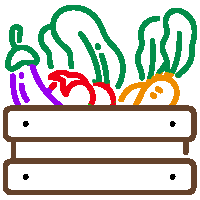Приказ основних података о документу
Parasitoid species of Physokermes species on Norway spruce in Serbia
| dc.creator | Simonović, Marija | |
| dc.creator | Dervišević, Marina | |
| dc.creator | Graora, Draga | |
| dc.date.accessioned | 2022-12-12T10:01:22Z | |
| dc.date.available | 2022-12-12T10:01:22Z | |
| dc.date.issued | 2019 | |
| dc.identifier.isbn | 9789534863008 | |
| dc.identifier.uri | http://RIVeC.institut-palanka.rs/handle/123456789/605 | |
| dc.description.abstract | During the years 2016-2018, the natural enemies of Physokermes species, namely, Physokermes hemicryphus (Dalman) and Ph. piceae (Schrank), were studied in Sebia. Populations of both species of the spruce bud scale were found at a very high level. Five species of predators were reared from Ph. hemicryphus colonies: Anthribus nebulosus Forster (Anthribidae), Exochomus quadripustulatus L., Scymnus abietis Paykull, Harmonia axyridis Pallas (Coccinellidae) and Chrysoperla carnea (Chrysopidae). The same predator species were reared from Ph. piceae colonies. The parasitoid species Aphycoides clavellatus (Dalm.), Microterys lunatus (Dalm.), Pseudorhopus testaceus (Ratzeburg) (Encyrtidae), Coccophagus lycimnia Walker (Aphelinidae) and Aprostocetus sp. (Eulophidae) were reared from both scale colonies while Eurytoma sp. (Eurytomidae), Metaphycus unicolor Hoffer (Encyrtidae) and Pachyneuron muscarum L. (Pteromalidae) were reared only from Ph. hemicryphus colonies. Coccophagus piceae Erdos (Aphelinidae) and Metaphycus stagnarum Hoffer (Encyrtidae) were identified as parasitoid associated only with Ph. piceae. The most abudant predator species in both scale colonies, Ph. hemicryphus and Ph. piceae, was A. nebulosus (45,72% and 57,11% respectively), while poliembrionic parasitoid, P. testaceus was the most abundant parasitoid species (42,02% and 28,25% respectively). Shannon-Weaver diversity index and Equitability index were used for analyzing the diversity of natural enemies on each locality. The calculated values of the Shannon-Weaver were as follows, Ph. hemicryphus: 0,3-1,33 and Ph. piceae: 0,37-0,87. Equitability index varied from 0,02 to 0,58 for Ph. hemicryphus natural enemies and from 0,097 to 0,21 Ph. piceae natural enemies, which indicate the unequal distribution of natural enemy species. | sr |
| dc.language.iso | en | sr |
| dc.publisher | Zagreb : Croatian Plant Protection Society | sr |
| dc.rights | restrictedAccess | sr |
| dc.source | Program and abstract book: XVth International Symposium on Scale Insect Studies, Zagreb, Croatia, 17-20 June | sr |
| dc.subject | coccidae | sr |
| dc.subject | natural enemies | sr |
| dc.subject | diversity | sr |
| dc.subject | Serbia | sr |
| dc.title | Parasitoid species of Physokermes species on Norway spruce in Serbia | sr |
| dc.type | conferenceObject | sr |
| dc.rights.license | ARR | sr |
| dc.citation.spage | 46 | |
| dc.identifier.rcub | https://hdl.handle.net/21.15107/rcub_rivec_605 | |
| dc.type.version | publishedVersion | sr |


